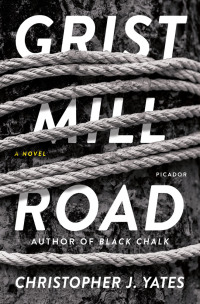The Shadow District by Arnaldur Indriðason
 Wednesday, January 24, 2018 at 8:21AM
Wednesday, January 24, 2018 at 8:21AM 
First published in Iceland in 2013; first published in translation in Great Britain in 2017; published by St. Martin's Press/Minotaur Books on November 7, 2017
The Shadow District is the first installment in a series of crime novels by an Icelandic author, Arnaldur Indriðason, who is best known in English for his Detective Erlundson series. The Shadow District is constructed along familiar lines. It tells two parallel stories, one involving a crime investigation in the past, the other involving a renewed interest in the investigation in the present. Indriðason uses that framework to tell an intriguing story of a murder investigation gone wrong, a tragedy that destroys lives in both the past and present.
The story beings with a death of a 90-year-old man in his home in Reykjavik. He appears to have died of old age, but a police investigator isn’t so sure. She wonders why the old man had kept newspaper clippings about a 20-year-old woman whose dead body had been hidden in a pile of rubbish during World War II.
The investigator’s retired colleague, introduced only as Konrád, knows something about the 1944 murder because his con artist father was involved in a séance connected to the death that he remembers as being “disastrous.” The details of the séance are revealed slowly as the story progresses. The killing also makes Konrád think about his father’s unsolved murder.
The World War II story is told in flashbacks that reveal an interesting bit of Icelandic history. The murder victim’s body was discovered by a teenage girl who was secretly messing around with an American soldier, a circumstance so common that shocked Icelanders called it “the Situation” and formed a committee to do something about it. They apparently didn’t want pure Icelandic girls to be tainted by foul Americans. Many older Icelanders apparently viewed the United States (to quote our president) as a “shithole” country, while the younger generation of women were happy to meet men who seemed to offer more excitement than the local farm boys could muster.
Unfortunately for the girl who found the murder victim, her American suitor turned out to have a wife back home in Illinois. Suspicion soon focuses on whether an American might have killed the girl, but the investigation leads in many directions. The two investigators are an Icelandic detective named Flóvent and a Canadian military officer (who has Icelandic roots) named Thorson.
Icelandic folklore also plays an interesting role in the story. Flóvent and Thorson learn that the murder victim had been made pregnant by rape and that her rapist told her to blame the crime on the huldufólk, elves who live in the Icelandic woods. That causes the investigators to wonder whether the victim’s death might be related to the disappearance of another girl in a different part of the country three years earlier. After that woman was raped, she blamed her attack on the huldufólk.
As is common with police officers around the world, the two investigators build a theory on circumstantial evidence and at least one of them develops tunnel vision about proving the theory is correct. Many years later, in the novel’s present, that theory is questioned for reasons that bridge the present to the past.
Indriðason carefully weaves the investigations of the past and present deaths together, letting the reader piece together the clues and decide among the various suspects who may have killed the two women — assuming the huldufólk were not to blame. The story seems to build toward a logical conclusion, then takes a twist, something that all mystery fans appreciate.
Indriðason tells the story in clear prose and gives his characters enough personality to make them believable. The story’s use of Icelandic history and folklore also adds to its interest. But it’s the mystery and the challenge it presents to readers as they piece together clues that makes The Shadow District a promising start to this veteran writer’s new crime series.
RECOMMENDED



